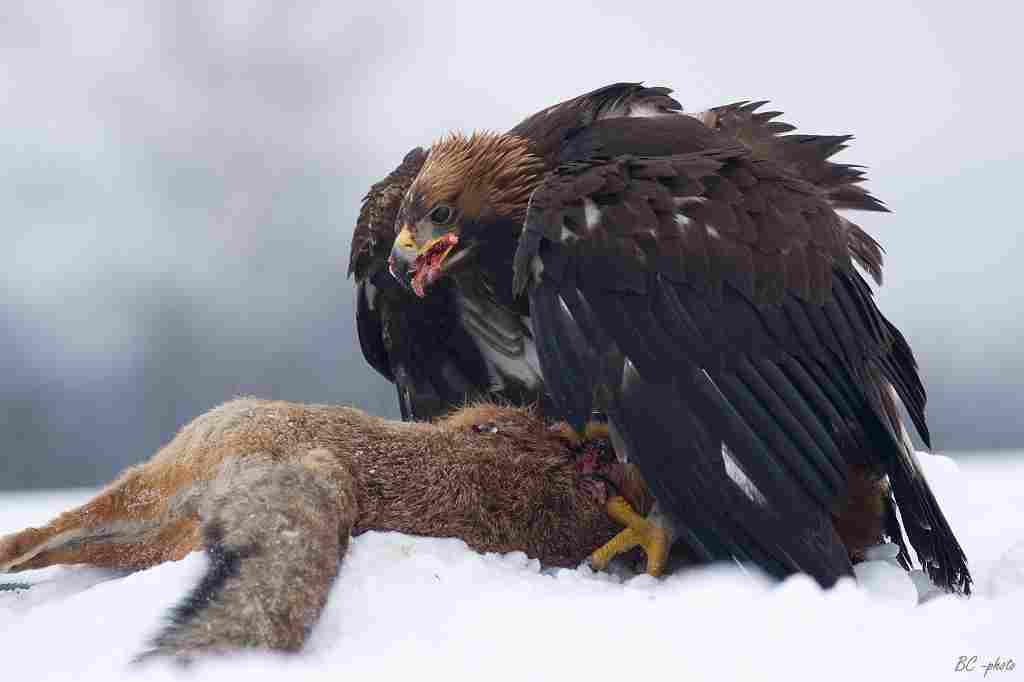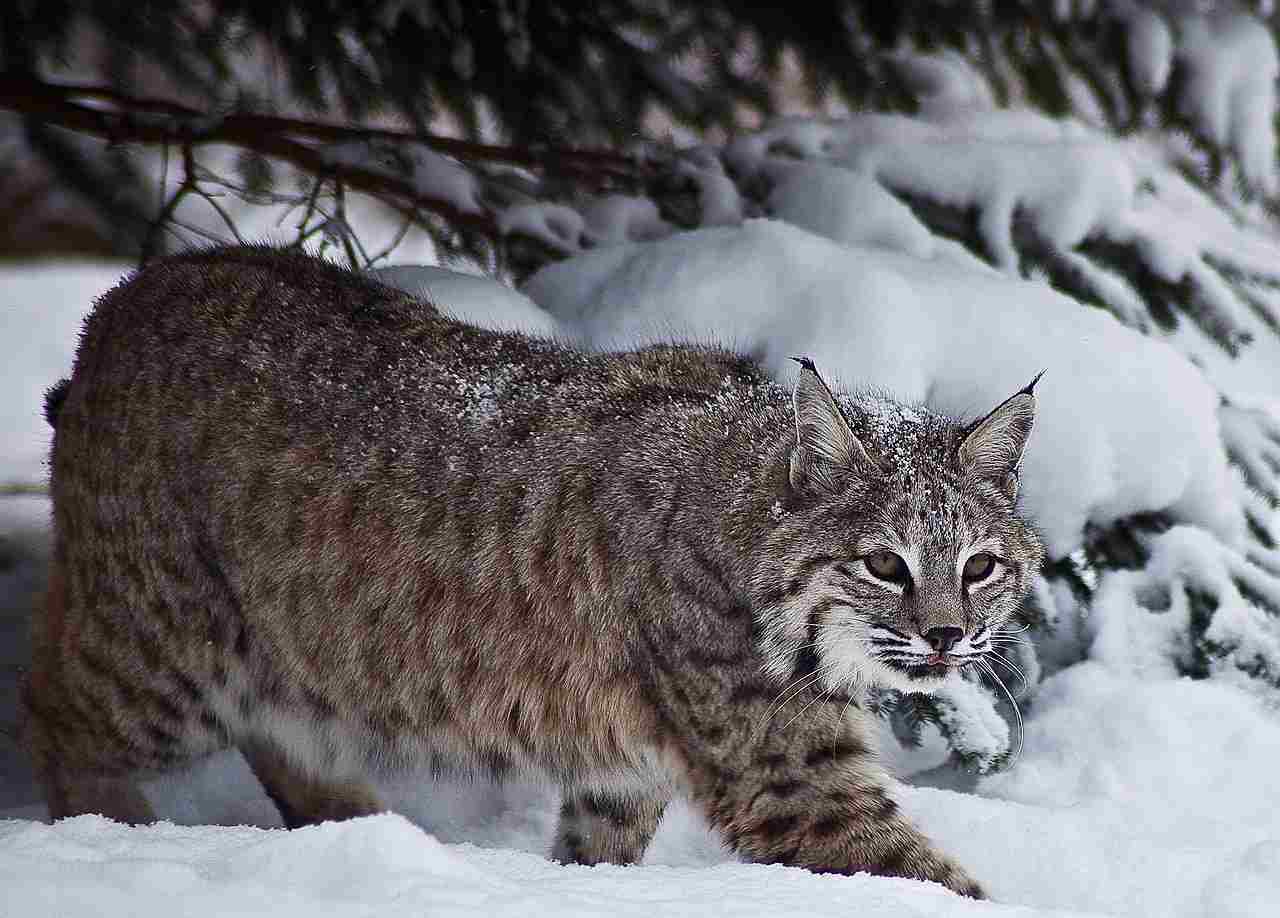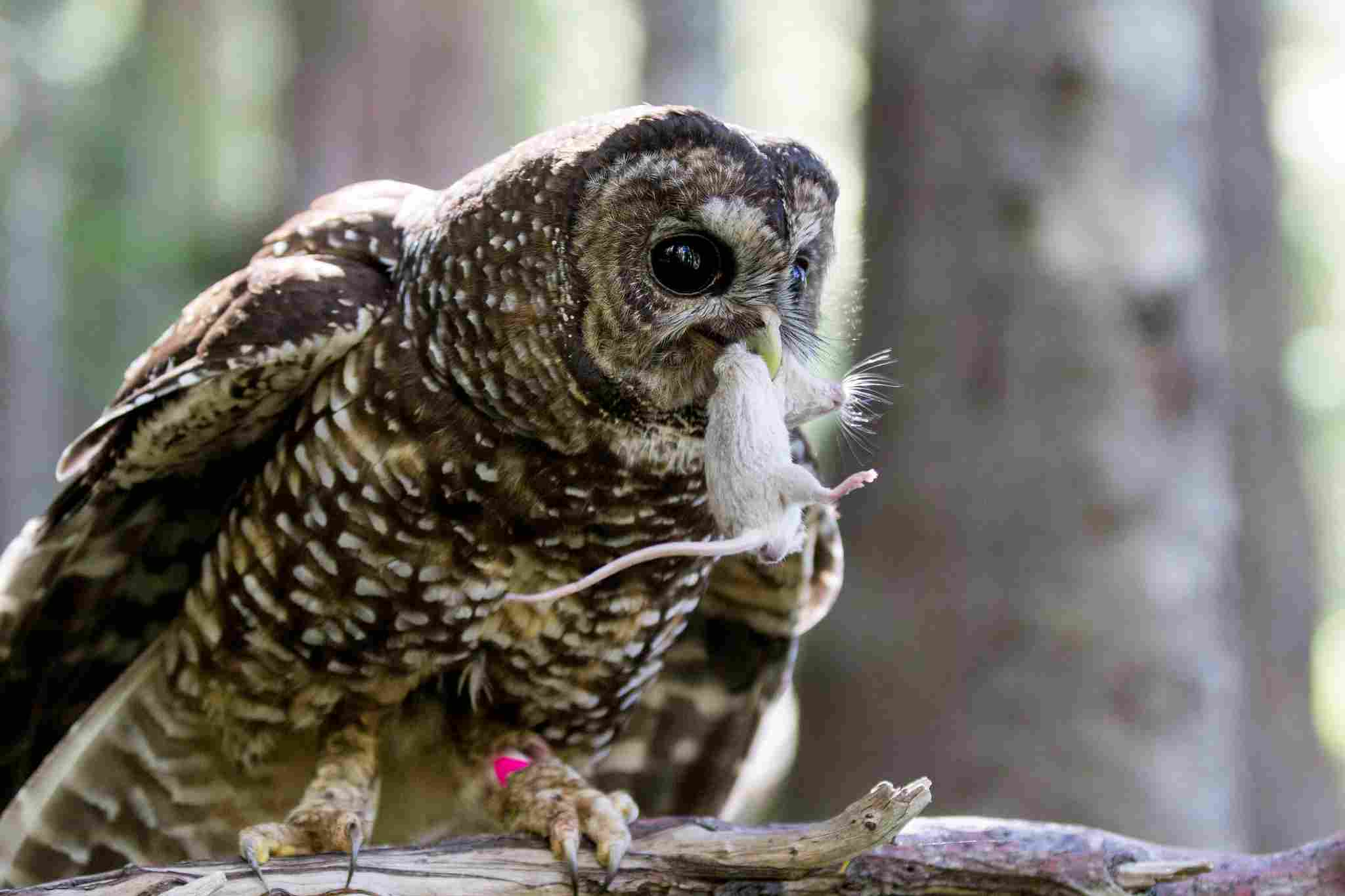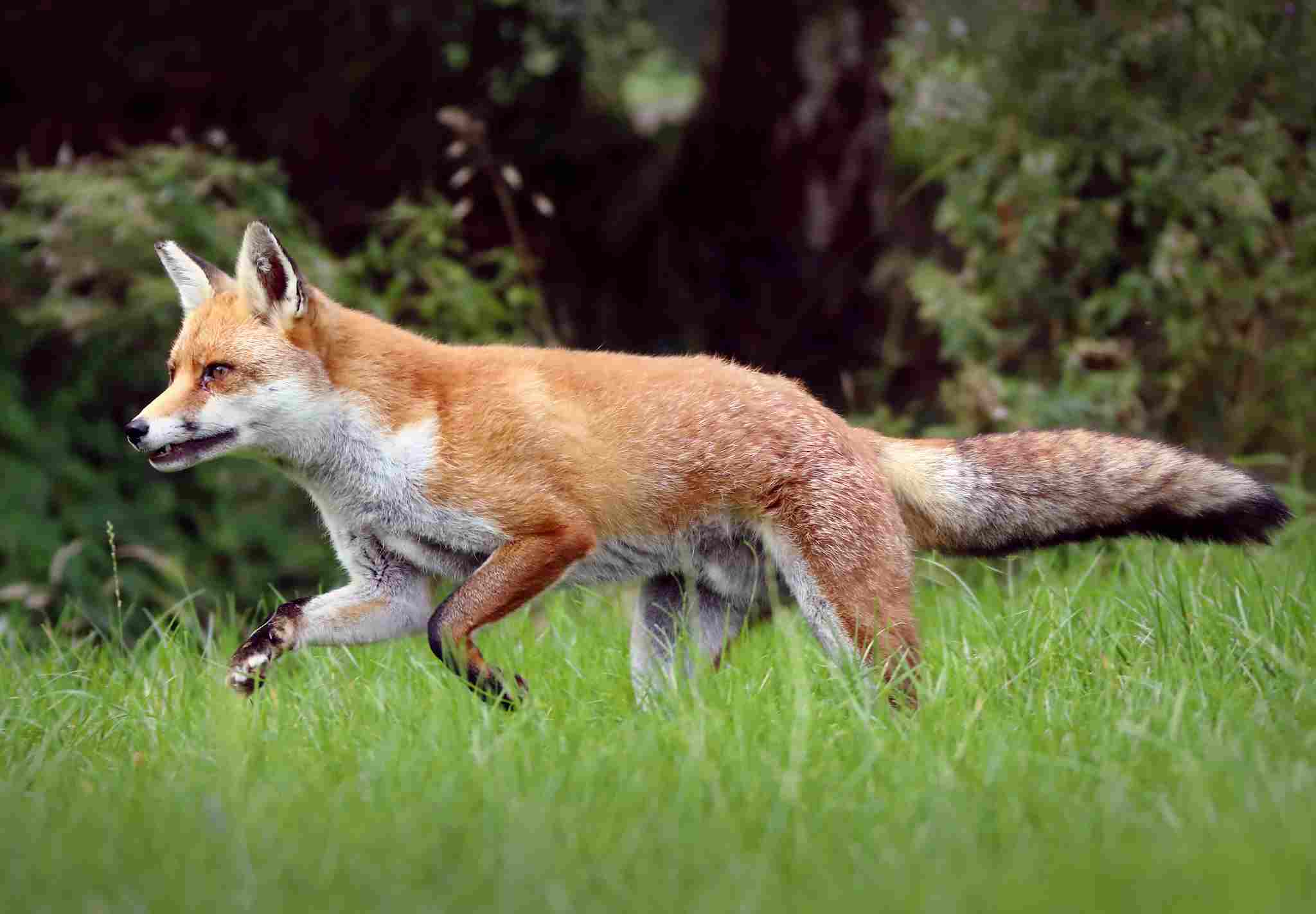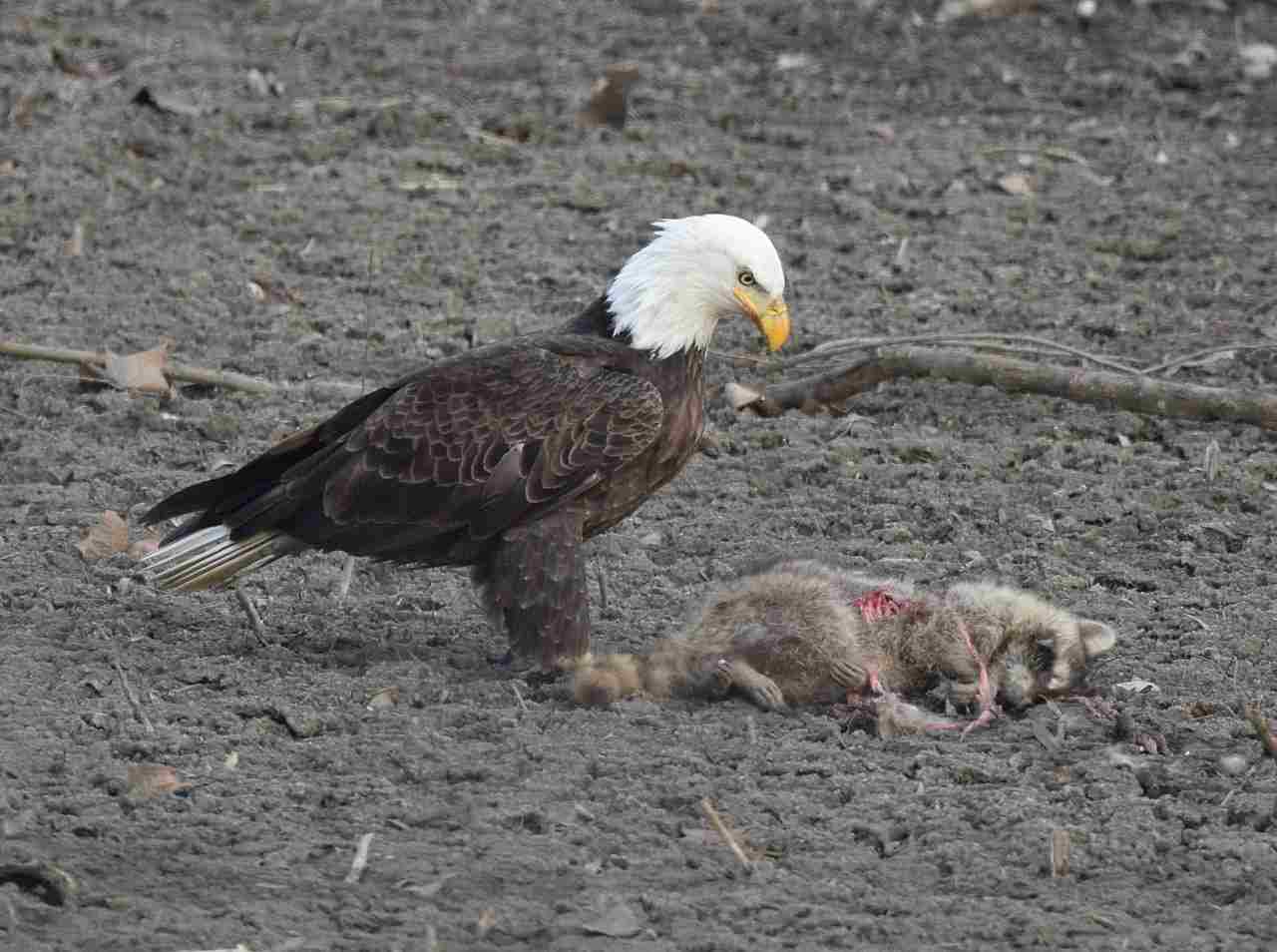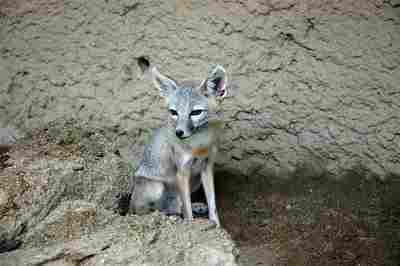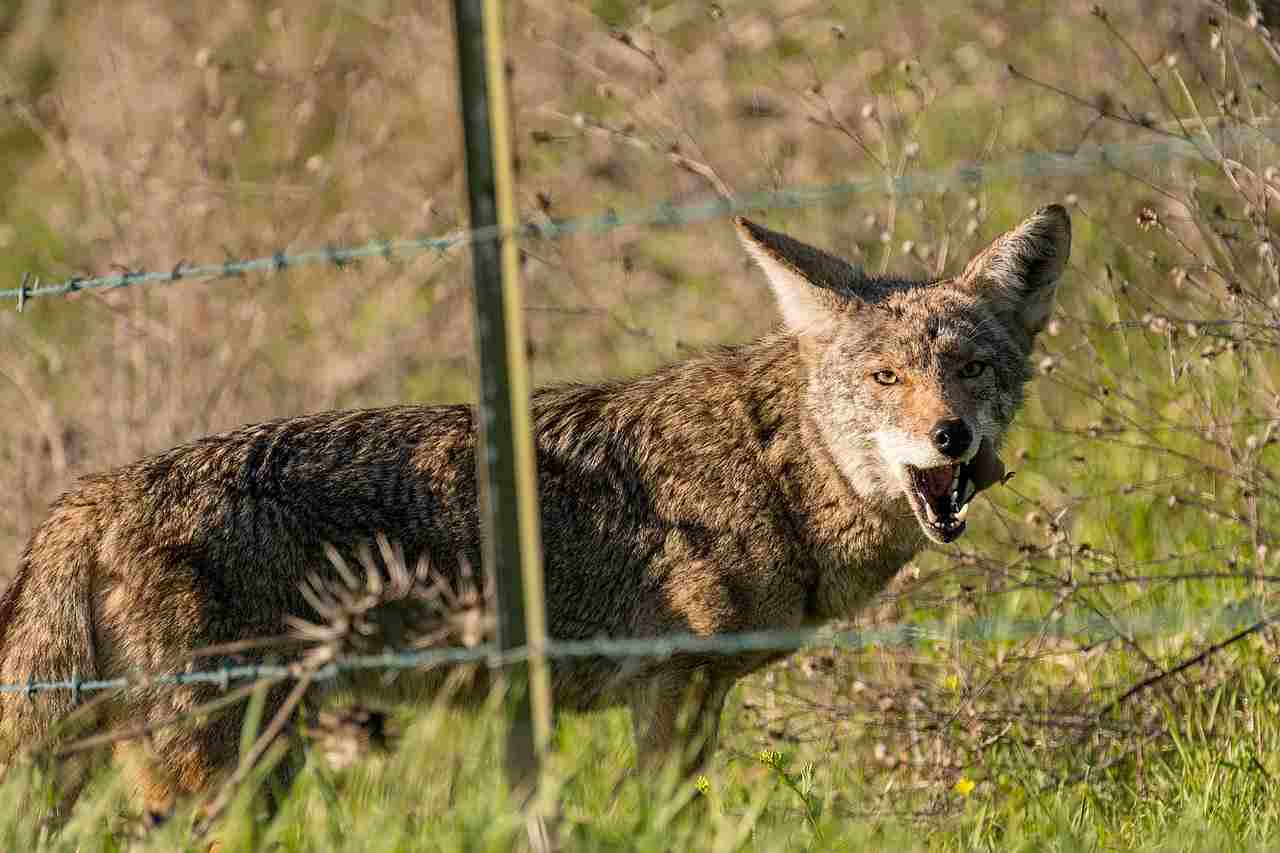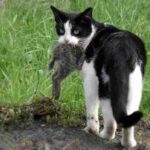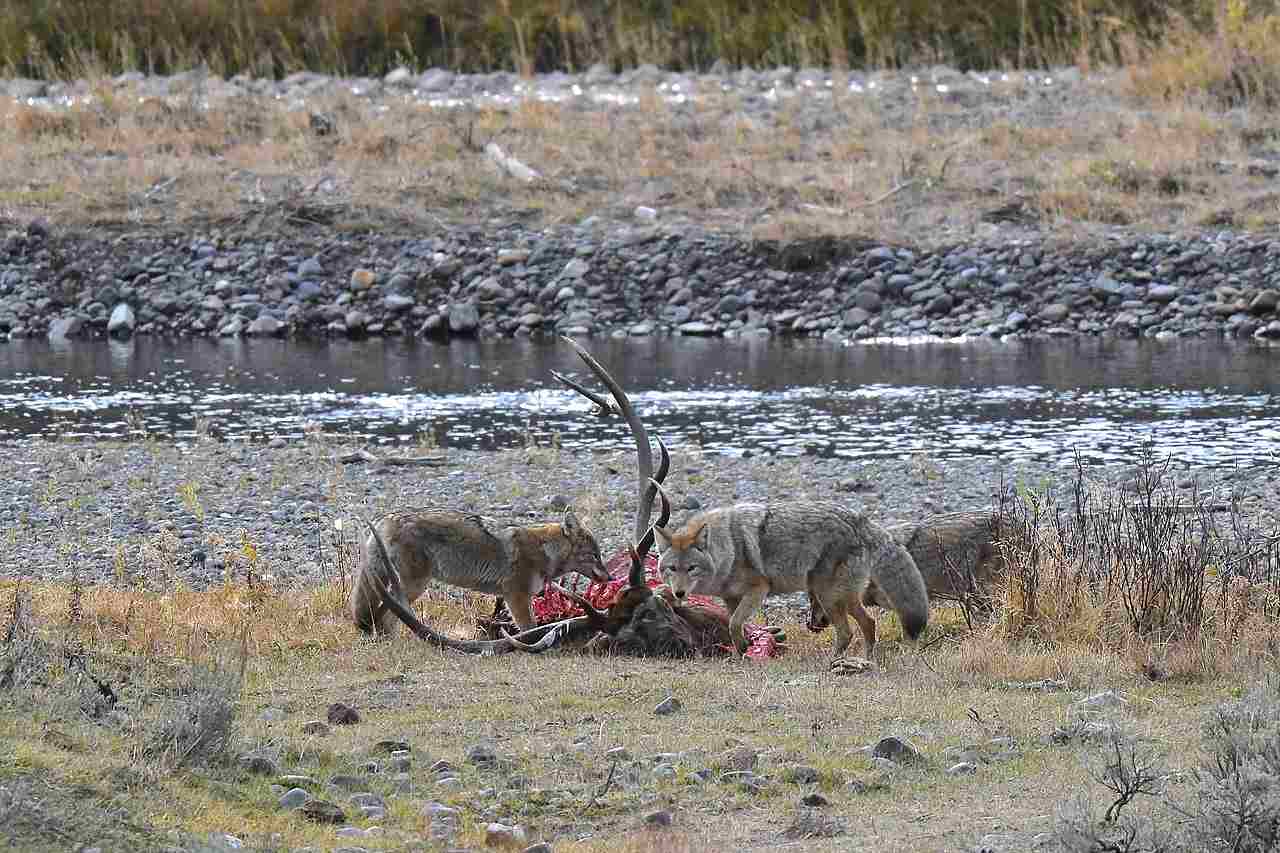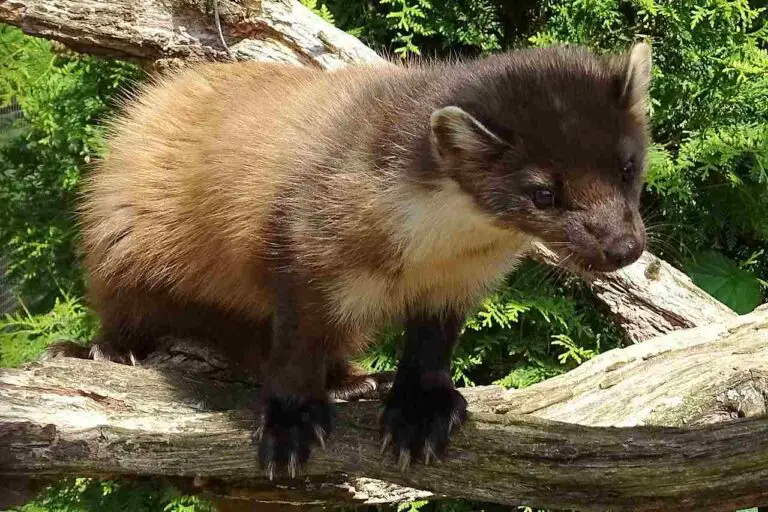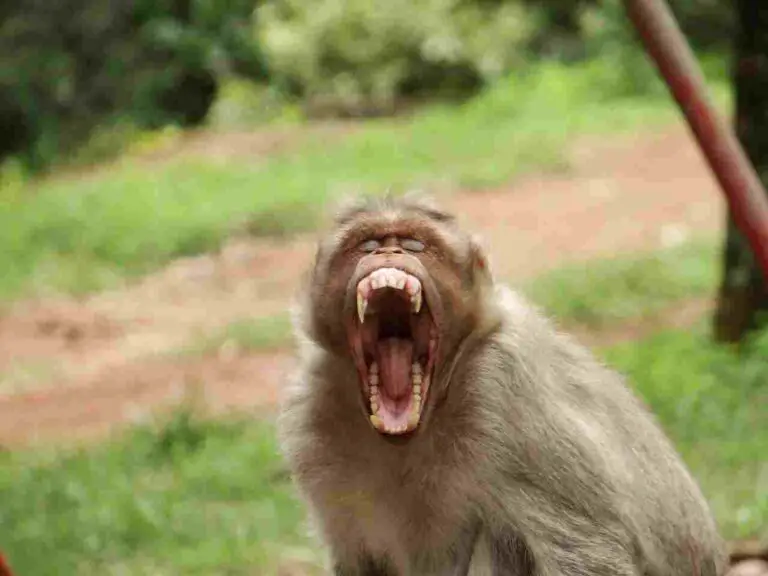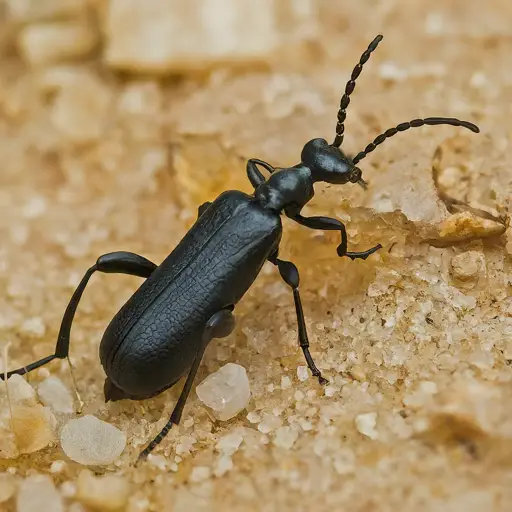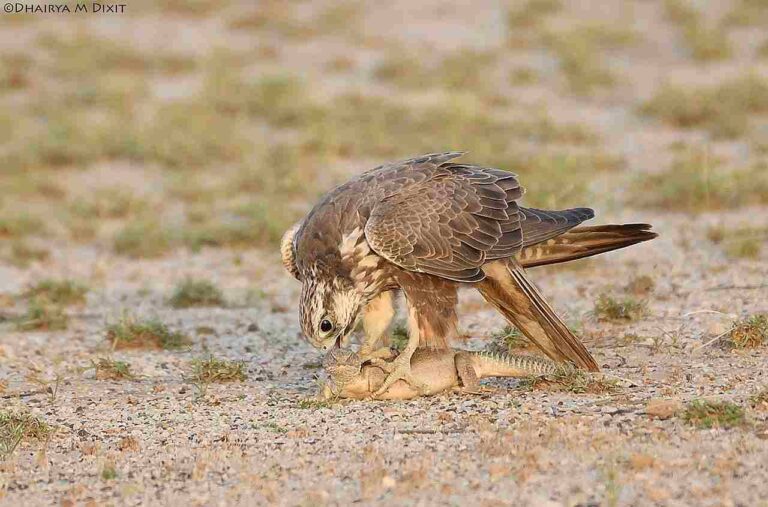9+ Predators in Texas and Their Characteristics
1. Bobcat
Bobcats (Lynx rufus) are among the most adaptable and widespread predators in Texas, known for their elusive behavior and striking appearance. These medium-sized wild cats have a distinctive ruff of fur around their cheeks and tufted ears, resembling their larger relatives, the lynx. Bobcats primarily inhabit wooded areas, scrublands, and semi-desert regions, where they skillfully blend into their surroundings. As stealthy nocturnal hunters, they rely on their keen eyesight, acute hearing, and remarkable agility to stalk and ambush their prey, which consists of small mammals like rabbits, rodents, and birds.
Though typically solitary and territorial, bobcats occasionally cross paths with humans, especially in suburban and rural areas where natural habitats overlap with human development. While generally not aggressive toward people, these encounters may lead to conflicts when bobcats prey on livestock or pets. However, bobcats play a crucial role in maintaining ecosystem balance by controlling rodent populations, contributing to the health of Texas’s diverse ecosystems. Understanding their behavior and respecting their space is key to coexisting with these fascinating and elusive predators.
2. Snake
Texas is home to a vast array of snake species, from non-venomous varieties to the more dangerous venomous ones like rattlesnakes, copperheads, and cottonmouths. Snakes in Texas play a critical role in controlling pest populations, particularly rodents, and contribute to the overall health of the state’s ecosystems. Venomous snakes, such as the Western Diamondback Rattlesnake, use their potent venom to subdue prey, while non-venomous species like the Texas Rat Snake rely on constriction. Snakes in Texas can be found in diverse habitats, including forests, grasslands, deserts, and wetlands, each uniquely adapted to their environment.
Despite their ecological importance, snakes often evoke fear and caution among humans. While most snakes in Texas are not aggressive and prefer to avoid contact with people, it’s important to be cautious and respectful when encountering them in the wild or near residential areas. Proper education and awareness about snake behavior can help reduce conflicts and promote coexistence. Texas’s rich diversity of snakes reflects the state’s wide-ranging ecosystems, underscoring the need for their conservation and protection.
3. Alligator
The American alligator (Alligator mississippiensis) represents one of the most iconic predators in Texas, primarily inhabiting the eastern and southeastern regions of the state. These formidable reptiles can be found in freshwater environments like swamps, marshes, and rivers, where they serve as apex predators, maintaining balance in the ecosystem. Alligators are known for their powerful jaws and robust bodies, with adult males reaching lengths of up to 15 feet or more. They primarily feed on fish, turtles, birds, and small mammals, but are also known to scavenge when necessary.
While alligators can pose a threat to humans and pets, incidents are relatively rare. Most interactions with humans occur when people encroach upon their territory or when alligators are fed by humans, leading to habituation. To coexist safely with alligators, it’s important to maintain a respectful distance and avoid feeding or provoking them. Texas has implemented regulations to manage alligator populations and protect both the reptiles and the people who live near their habitats. These efforts ensure that alligators remain a vital part of Texas’s natural heritage.
4. Mountain Lion
Mountain lions (Puma concolor), also known as cougars or pumas, are the largest wild cats in Texas. They are powerful and elusive predators, inhabiting the rugged terrain of the state’s western regions, including the Big Bend area and the Trans-Pecos mountains. Mountain lions are highly adaptable, with a wide-ranging diet that includes deer, wild pigs, and other large mammals, though they will also eat smaller prey when necessary. Their stealth and strength make them formidable hunters, and their presence helps regulate prey populations, contributing to ecological balance.
Mountain lions are solitary creatures, and sightings are relatively rare due to their elusive nature. However, as human development encroaches on their habitats, encounters between mountain lions and people have become more common. Despite their strength, mountain lions generally avoid humans, and attacks are exceedingly rare. To minimize conflicts, it’s essential to respect their territory and avoid activities that might attract them, such as leaving food out in the open. Texas has specific regulations in place for mountain lion management, emphasizing conservation while ensuring public safety.
5. Hawk
Hawks are among the most visible and admired birds of prey in Texas, with species like the Red-tailed Hawk and the Cooper’s Hawk commonly spotted across the state. These raptors are known for their keen eyesight, sharp talons, and strong beaks, which they use to catch and consume small mammals, birds, reptiles, and insects. Hawks are crucial in controlling populations of prey species, maintaining ecological balance in various environments, from woodlands and grasslands to urban areas. Their soaring flight and hunting skills make them captivating subjects for birdwatchers and nature enthusiasts.
Hawks are generally not a threat to humans, but they can become territorial during nesting season, especially when people inadvertently encroach upon their nesting sites. Texas laws protect hawks and other birds of prey, ensuring their conservation and regulating their capture or disturbance. By respecting these predators and their habitats, Texans can enjoy the beauty and ecological benefits that hawks bring to the state. Their presence is a testament to the rich biodiversity of Texas’s ecosystems.
6. Eagle
Eagles, particularly the Bald Eagle and the Golden Eagle, hold a special place in the hearts of Texans as symbols of strength and majesty. These magnificent birds of prey are known for their impressive wingspans and powerful talons, allowing them to hunt large prey such as fish, waterfowl, and small mammals. Eagles are often found near bodies of water, where they can easily spot and capture fish, or in open areas with abundant prey. In Texas, Bald Eagles are often seen near rivers and lakes, especially during the winter months when they migrate to the state.
Eagles are protected by federal laws in the United States, including the Bald and Golden Eagle Protection Act, which makes it illegal to disturb or harm them. Conservation efforts have helped Bald Eagles recover from near-extinction, and their increasing presence in Texas is a positive sign for the state’s wildlife. Despite their impressive appearance, eagles are not generally aggressive toward humans unless provoked or threatened. By respecting their habitats and following conservation guidelines, Texans can continue to enjoy the majestic sight of eagles soaring through the skies.
7. Owl
Owls are enigmatic and often mysterious predators that thrive in various habitats across Texas, from dense forests to open grasslands. Notable species like the Great Horned Owl and the Eastern Screech Owl are known for their excellent night vision and silent flight, allowing them to hunt undetected in the dark. Owls primarily feed on small mammals such as mice and voles, but they also consume insects, birds, and reptiles. Their ability to rotate their heads nearly 270 degrees gives them an expansive field of vision, aiding them in tracking prey.
Owls contribute significantly to maintaining ecosystem balance by controlling rodent populations, which can impact agriculture and spread disease. Despite their importance, owls are often misunderstood and sometimes associated with superstitions. It’s crucial to respect their habitats and avoid disturbing their nesting sites, as these birds can become defensive when protecting their young. Texas’s diverse landscapes provide owls with the variety they need to thrive, making them a vital component of the state’s wildlife.
8. Coyote
The coyote (Canis latrans) is one of Texas’s most adaptable and resourceful predators, capable of thriving in urban and rural environments alike. Coyotes are opportunistic omnivores, feeding on a varied diet that includes small mammals, birds, insects, and even fruits and vegetables. This flexibility in diet and behavior allows them to survive in areas with significant human activity, leading to increased sightings in suburban neighborhoods and city parks. Despite their adaptability, coyotes are typically cautious around humans, preferring to stay hidden and active during twilight and nighttime hours.
The presence of coyotes can be a concern for residents with pets or small livestock, as these animals may be seen as easy prey. To minimize conflicts, it’s essential to secure garbage, keep pets indoors at night, and avoid feeding coyotes intentionally or unintentionally. Although they can pose a risk in certain situations, coyotes play a vital role in controlling populations of rodents and other small animals, contributing to the overall health of Texas’s ecosystems. Proper management and public education are key to coexisting with these intelligent predators.
9. Fox
Foxes are charismatic and cunning predators found throughout Texas, with two main species present: the Red Fox (Vulpes vulpes) and the Gray Fox (Urocyon cinereoargenteus). Red Foxes are known for their striking red fur and bushy tails, while Gray Foxes can climb trees, a unique trait among canids. Both species are skilled hunters, primarily feeding on small mammals, birds, and insects, but they also scavenge and consume plant material when available. Their adaptability allows them to thrive in various habitats, including forests, grasslands, and urban areas.
Foxes are typically solitary animals, with a well-developed sense of territory. Although they generally avoid direct contact with humans, foxes may be seen in suburban or rural areas in search of food. To avoid attracting them, residents should secure trash and eliminate potential food sources. Despite their occasional nuisance potential, foxes contribute to ecosystem balance by controlling rodent and small animal populations. In Texas, they are protected wildlife, and proper management practices are essential to ensure their continued survival while minimizing human-fox conflicts.
10. Scorpion
Scorpions are fascinating arthropod predators found across Texas, known for their distinctive pincers and venomous stingers. The most common species in Texas is the Striped Bark Scorpion (Centruroides vittatus), typically found in arid and semi-arid regions, but also in urban areas where they can hide in cracks, crevices, and under rocks. Scorpions are nocturnal hunters, preying on insects, spiders, and other small arthropods. They use their pincers to grasp prey and their stinger to deliver a venomous sting, immobilizing their target.
While scorpions can be intimidating, their presence contributes to the regulation of insect populations, benefiting the ecosystems they inhabit. Most scorpion stings are not life-threatening to humans, although they can be painful. To reduce the risk of encounters, it’s important to keep outdoor areas clean and clear of debris, and to seal gaps and openings in homes where scorpions might enter. In Texas, scorpions are a natural part of the landscape, and their behavior and role in the ecosystem remind us of the diverse range of predators that inhabit the state.
*Summary
-
Bobcat
-
Medium-sized wild cats with tufted ears and cheek ruffs
-
Primarily hunt small mammals and birds in wooded and scrubland areas
-
Generally solitary and territorial, can occasionally encounter humans
-
-
Snake
-
Wide variety of snake species, both non-venomous and venomous
-
Play a critical role in controlling pest populations
-
Caution advised due to potential danger from venomous species
-
-
Alligator
-
Found in freshwater habitats like swamps, marshes, and rivers
-
Apex predators, primarily hunt fish, turtles, and birds
-
Important to avoid feeding or provoking them
-
-
Mountain Lion
-
Largest wild cats in Texas, primarily in the western regions
-
Feed on deer and other large mammals
-
Generally avoid humans; attacks are rare but possible
-
-
Hawk
-
Common birds of prey with keen eyesight and sharp talons
-
Help control populations of small mammals, birds, and insects
-
May become territorial during nesting season
-
-
Eagle
-
Bald and Golden Eagles are prominent in Texas
-
Known for impressive wingspans and powerful talons
-
Protected by federal laws, ensuring their conservation
-
-
Owl
-
Night predators with excellent night vision and silent flight
-
Hunt small mammals, birds, and insects
-
Misunderstood due to superstitions; important in rodent control
-
-
Coyote
-
Highly adaptable predators found in urban and rural areas
-
Opportunistic omnivores, feeding on small mammals, birds, and fruits
-
Can pose a risk to pets and small livestock
-
-
Fox
-
Charismatic predators with two main species: Red Fox and Gray Fox
-
Feed on small mammals, birds, and insects, and can scavenge
-
Typically solitary and territorial; potential for human-fox conflict
-
-
Scorpion
-
Arthropods with pincers and venomous stingers
-
Common species in Texas is the Striped Bark Scorpion
-
Primarily hunt insects and spiders; generally not life-threatening to humans
-
| Predator | Key Points |
| Bobcat |
Medium-sized wild cats with tufted ears; hunt small mammals and birds; generally solitary and territorial; occasional human encounters.
|
| Snake |
Wide variety; some venomous; control pest populations; caution advised due to potential danger.
|
| Alligator |
Found in freshwater habitats; apex predators; avoid feeding or provoking them; important to ecosystem balance.
|
| Mountain Lion |
Largest wild cats; feed on deer and large mammals; generally avoid humans; attacks rare but possible.
|
| Hawk |
Common birds of prey; keen eyesight; control populations of small mammals, birds, and insects; may become territorial during nesting season.
|
| Eagle |
Bald and Golden Eagles; known for wingspans and talons; protected by federal laws; contribute to ecosystem balance.
|
| Owl |
Night predators with excellent night vision and silent flight; hunt small mammals, birds, and insects; contribute to rodent control.
|
| Coyote |
Highly adaptable; opportunistic omnivores; can pose a risk to pets and small livestock; generally cautious around humans.
|
| Fox |
Charismatic predators; Red and Gray Fox; hunt small mammals, birds, and insects; typically solitary; can scavenge.
|
| Scorpion |
Arthropods with pincers and venomous stingers; primarily hunt insects and spiders; generally not life-threatening to humans.
|
